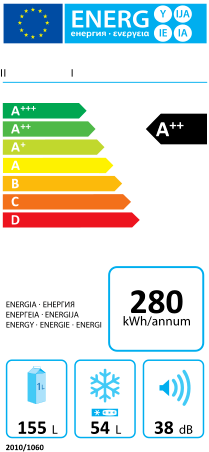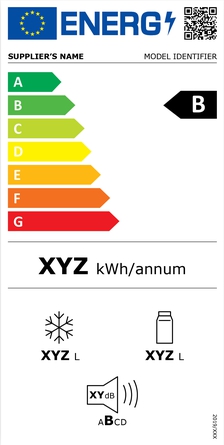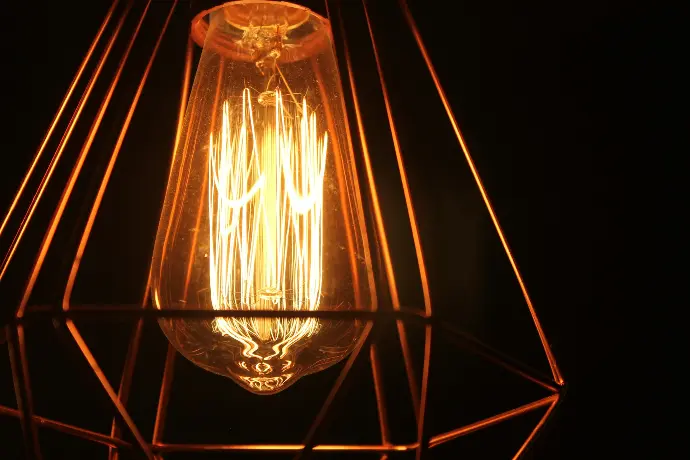The recent change in the energy label for lamps, which came into effect on September 1, 2021, has led to many questions and uncertainties. This update is aimed at both consumers and importers as the new system significantly changes the way the energy efficiency of lighting is assessed. In this blog we explain how the new energy label is calculated, we help you identify whether you are dealing with the old or new label, and we clarify what these changes mean for the energy efficiency of your lamps.
The old energy label: A look back
Until August 31, 2021, the old energy label, ranging from A++ (the most energy efficient) to E (the least energy efficient), was used for light sources that exceeded 30 lumens. This label can still be found on products produced before this date and will be visible until March 1, 2023. It is important to know that during this transition period, both the old and new energy labels could be displayed on products and websites, which could sometimes cause confusion among consumers. However, after March 1, 2023, only the new energy label will be displayed.
Introduction of the new energy label
The new energy label, which came into effect on September 1, 2021, is a significant shift in the way the energy efficiency of lamps is assessed and displayed. This label applies to all light sources with a luminous flux between 60 and 82,000 lumens. It ranges from A (the most energy efficient) to G (the least energy efficient), where the energy class is determined by the ratio between the number of lumens and the number of Watts. This new classification is designed to encourage manufacturers to further improve their lighting products and make them even more economical. The new label offers consumers a clearer and more accurate picture of the energy performance of lighting products.


The old label (left) and the new label (right) of a refrigerator.
The influence on energy efficiency
The introduction of the new energy label does not change the actual energy efficiency of the lamps. However, it provides a more refined way to measure and present this efficiency. Interestingly, many lamps previously considered very efficient (categories A+ and A++) now fall into the lower categories D to G. However, this does not mean that these lamps have become less efficient; it simply reflects a stricter and more detailed rating scale. The reclassification provides more room for future improvements and highlights the industry's continued commitment to energy savings.
Is it mandatory to put an energy label on your product packaging?
Yes, it is mandatory within the European Union to put an energy label on certain products. The obligation to use an energy label applies to products for which energy efficiency is important, such as household appliances, electronic equipment and lighting products. This energy label helps consumers to assess the energy efficiency of a product and compare it with other products.
Read more:

EMC and lighting: A crucial factor in the lighting industry
In this blog we explore the importance of EMC legislation in the lighting industry and the challenges it presents.
How do you determine energy efficiency?
- Standards and guidelines:
Each type of product has specific EU directives and standards that determine how energy efficiency should be measured. These guidelines provide detailed instructions on testing procedures..
- Laboratory tests:
Energy efficiency is usually tested in specialized laboratories that have the necessary equipment and expertise to carry out the tests according to established standards. These tests measure various aspects of the product, such as energy consumption, performance and other relevant characteristics. - Certification and compliance:
After testing, the product receives an energy label indicating its performance level. Manufacturers must ensure that their products meet legal requirements for energy labels before placing them on the market. - Controls and enforcement:
Regulatory authorities in various countries carry out checks to ensure compliance with energy label requirements. Non-compliance may result in sanctions, including fines or the ban on sales of the product in the relevant market.
It is important for importers to verify that the products they import meet the relevant energy label requirements of the market in which they will be sold. In many cases, this means working with manufacturers to ensure that proper testing procedures are followed and that the products have the appropriate certification.
Conclusion
The switch to the new energy label for lamps marks an important step towards more accurate and meaningful information about the energy performance of lighting products. It is essential for importers to understand these changes and ensure that the products they import and sell comply with the new standards. This is not just a matter of compliance, but also an opportunity to demonstrate that they understand and promote the value of sustainability and energy efficiency.
Do you have questions about the new energy label and its impact on lighting products?
Contact Westwood Sourcing for expert advice and support with your import activities.









